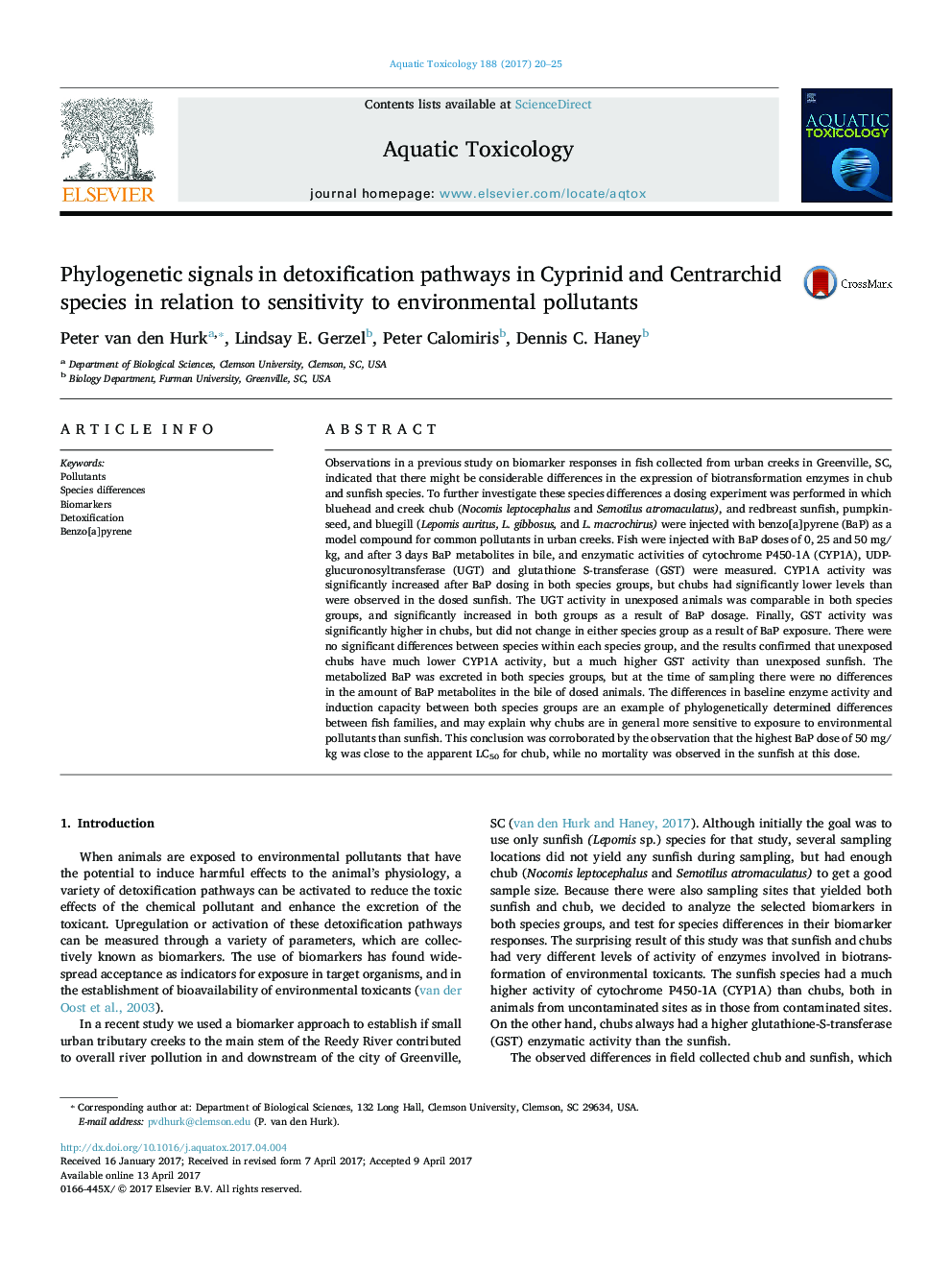| کد مقاله | کد نشریه | سال انتشار | مقاله انگلیسی | نسخه تمام متن |
|---|---|---|---|---|
| 5764217 | 1625917 | 2017 | 6 صفحه PDF | دانلود رایگان |
عنوان انگلیسی مقاله ISI
Phylogenetic signals in detoxification pathways in Cyprinid and Centrarchid species in relation to sensitivity to environmental pollutants
دانلود مقاله + سفارش ترجمه
دانلود مقاله ISI انگلیسی
رایگان برای ایرانیان
کلمات کلیدی
موضوعات مرتبط
علوم زیستی و بیوفناوری
علوم کشاورزی و بیولوژیک
علوم آبزیان
پیش نمایش صفحه اول مقاله

چکیده انگلیسی
Observations in a previous study on biomarker responses in fish collected from urban creeks in Greenville, SC, indicated that there might be considerable differences in the expression of biotransformation enzymes in chub and sunfish species. To further investigate these species differences a dosing experiment was performed in which bluehead and creek chub (Nocomis leptocephalus and Semotilus atromaculatus), and redbreast sunfish, pumpkinseed, and bluegill (Lepomis auritus, L. gibbosus, and L. macrochirus) were injected with benzo[a]pyrene (BaP) as a model compound for common pollutants in urban creeks. Fish were injected with BaP doses of 0, 25 and 50Â mg/kg, and after 3Â days BaP metabolites in bile, and enzymatic activities of cytochrome P450-1A (CYP1A), UDP-glucuronosyltransferase (UGT) and glutathione S-transferase (GST) were measured. CYP1A activity was significantly increased after BaP dosing in both species groups, but chubs had significantly lower levels than were observed in the dosed sunfish. The UGT activity in unexposed animals was comparable in both species groups, and significantly increased in both groups as a result of BaP dosage. Finally, GST activity was significantly higher in chubs, but did not change in either species group as a result of BaP exposure. There were no significant differences between species within each species group, and the results confirmed that unexposed chubs have much lower CYP1A activity, but a much higher GST activity than unexposed sunfish. The metabolized BaP was excreted in both species groups, but at the time of sampling there were no differences in the amount of BaP metabolites in the bile of dosed animals. The differences in baseline enzyme activity and induction capacity between both species groups are an example of phylogenetically determined differences between fish families, and may explain why chubs are in general more sensitive to exposure to environmental pollutants than sunfish. This conclusion was corroborated by the observation that the highest BaP dose of 50Â mg/kg was close to the apparent LC50 for chub, while no mortality was observed in the sunfish at this dose.
ناشر
Database: Elsevier - ScienceDirect (ساینس دایرکت)
Journal: Aquatic Toxicology - Volume 188, July 2017, Pages 20-25
Journal: Aquatic Toxicology - Volume 188, July 2017, Pages 20-25
نویسندگان
Peter van den Hurk, Lindsay E. Gerzel, Peter Calomiris, Dennis C. Haney,